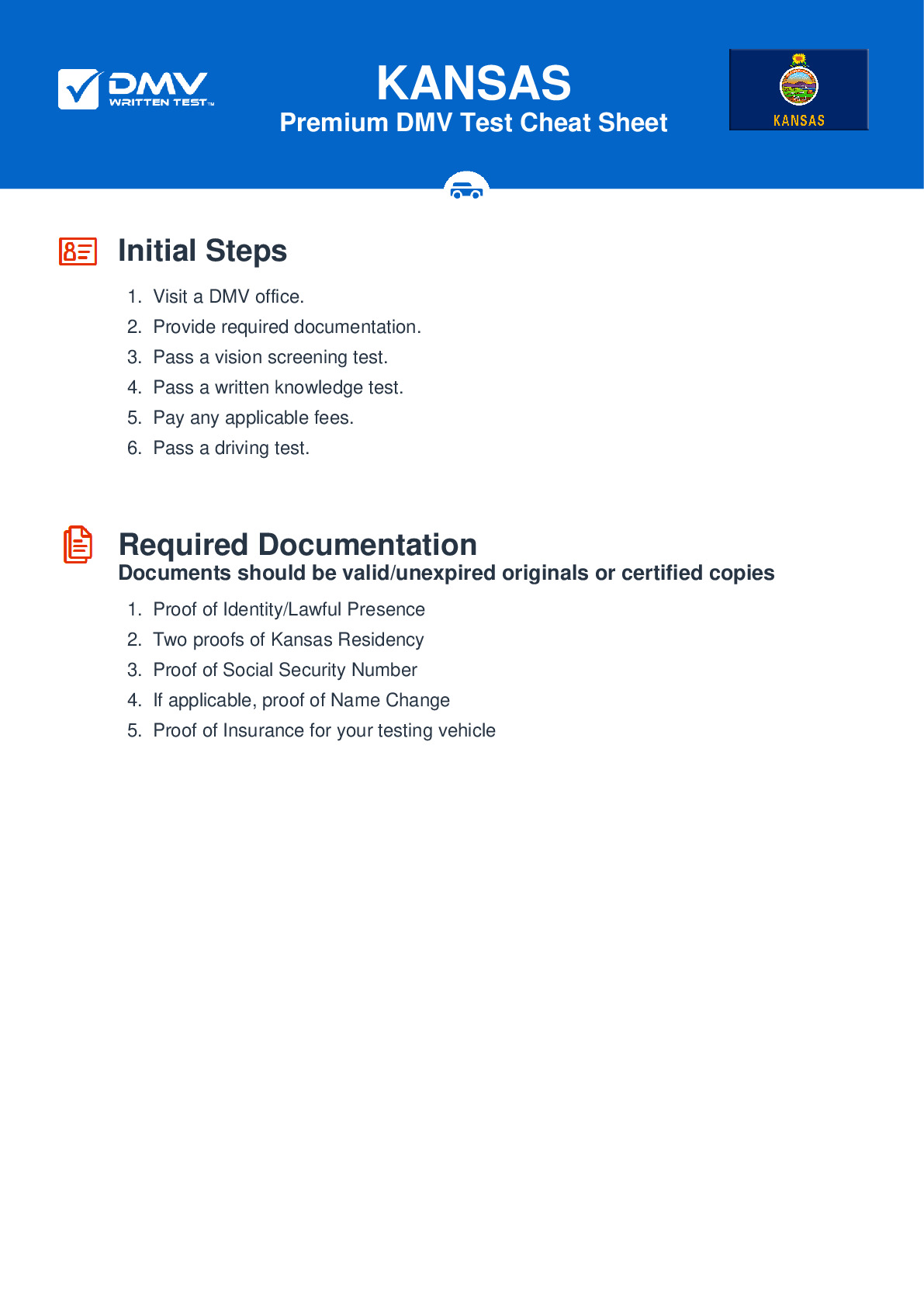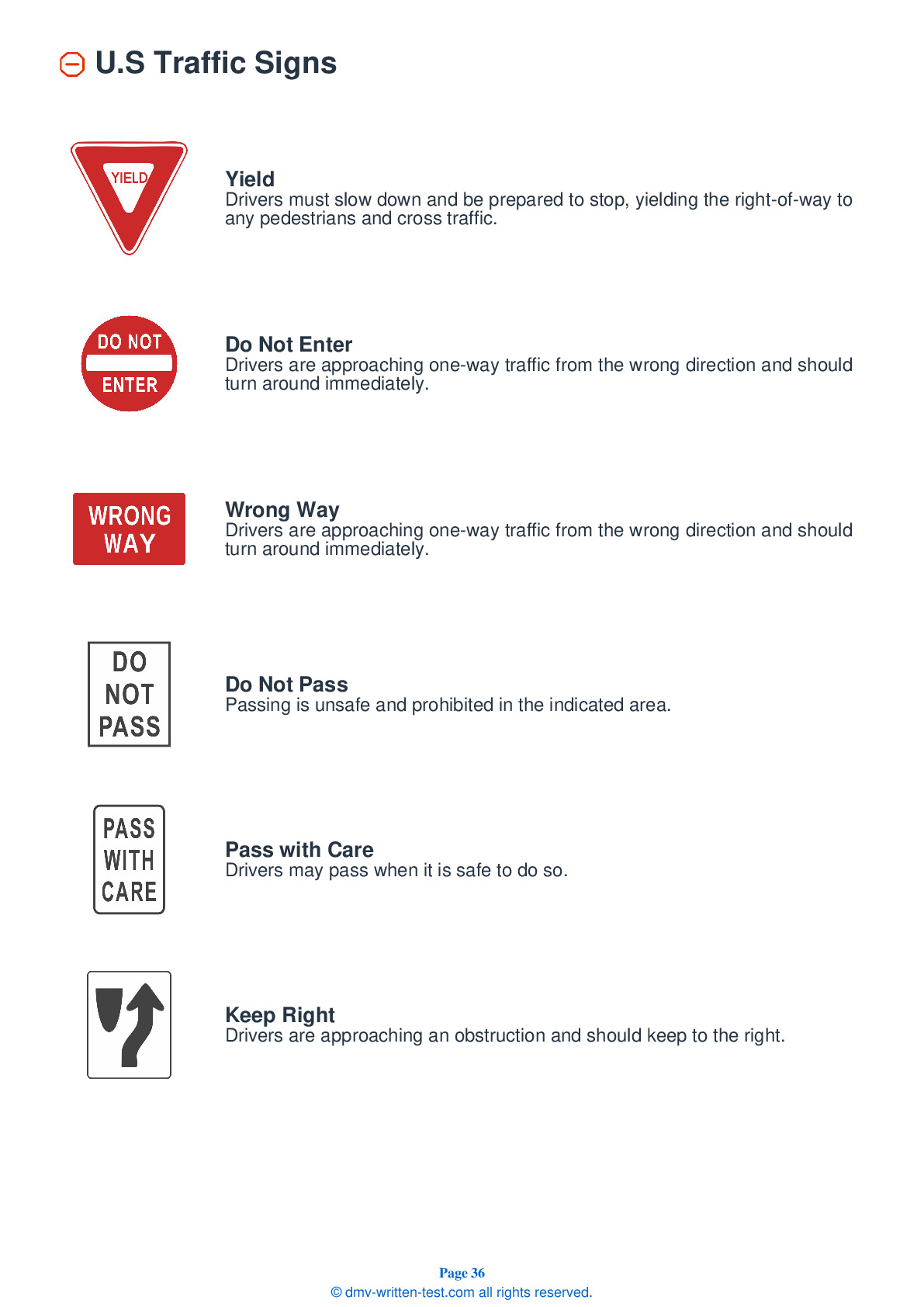2025 Kansas Permit Test 13
The following questions are from real DMV written tests. These are some of the actual permit questions you will face in Kansas. Each permit practice test question has three answer choices. Select one answer for each question and select "grade this section." You can find this button at the bottom of the drivers license quiz. For a complete list of questions and answers for Kansas please visit https://cheat-sheets.dmv-written-test.com/en/kansas/car.
Number of Tests
Number of Question
Passing Score
1. You can help keep the driver behind you a safe distance away from your vehicle by:
Explanation
It is not always easy to maintain a safe distance behind your vehicle. However, you can help keep the driver behind you a safe distance away from your vehicle by maintaining a steady speed and signaling turns, lane changes, and deceleration in advance.
2. Increase your following distance when driving behind a large vehicle:
Explanation
Drivers of trucks, buses, vans, and any vehicles pulling campers or trailers may not be able to see you if you are driving directly behind them. Increase your following distance when driving behind one of these vehicles. Additionally, large vehicles can block your view of the road, so increase your following distance to look around the sides of the vehicle and see the road ahead.
3. A blood alcohol concentration of 0.02 percent:
Explanation
Every 0.02 percent increase in blood alcohol concentration nearly doubles a driver's risk of being in a fatal crash.
4. If you are driving and you see animals standing near the roadway:
Explanation
Slow down and proceed with caution if you see animals that are standing near the roadway. They may unexpectedly bolt or change direction at the last moment. Some animals travel in packs, so there may be more animals just out of sight that are also near the road.
5. If you see orange construction signs and cones on a freeway, you must:
Explanation
As you enter a work zone, signs and message boards will warn you of workers, slow-moving equipment, and/or closed lanes ahead. You should reduce your speed and be prepared to slow down or stop.
6. As you approach the top of a hill, you should:
Explanation
You may not know what is on the other side of a hill or just around a curve, even if you have driven the road many times. If a vehicle is stalled just out of sight on the roadway, you must be able to stop. Whenever you come to a hill or curve, adjust your speed so you can stop if necessary.
7. When passing another vehicle, you should return to your original lane when:
Explanation





